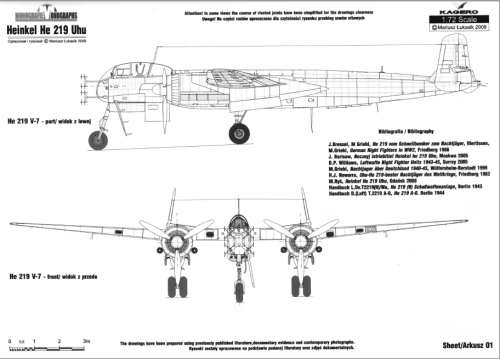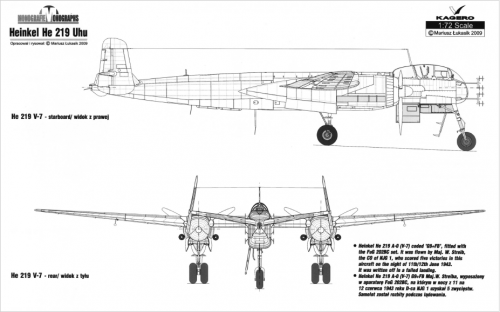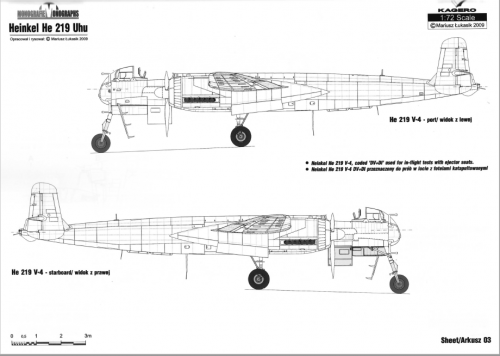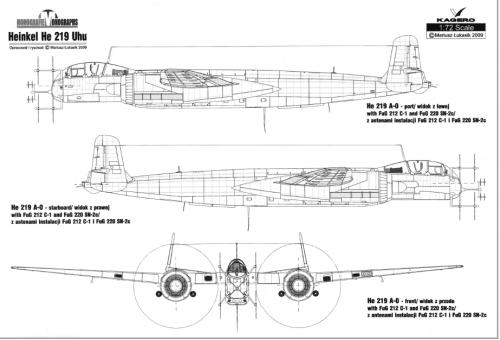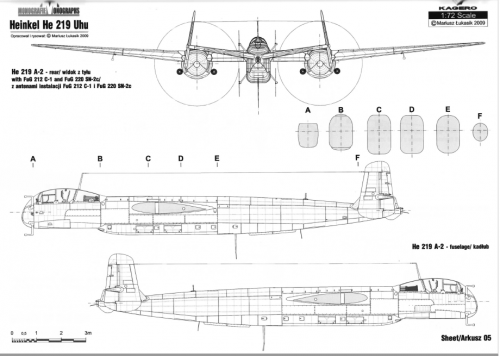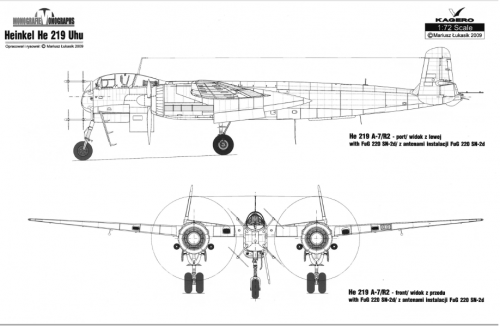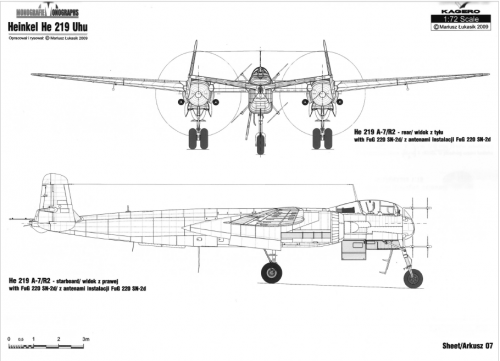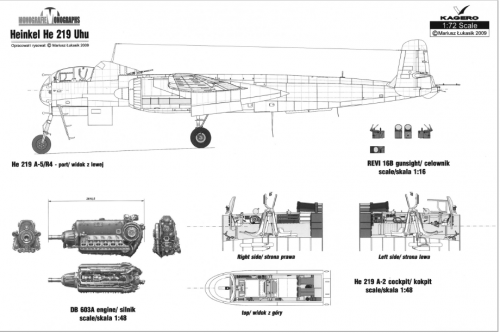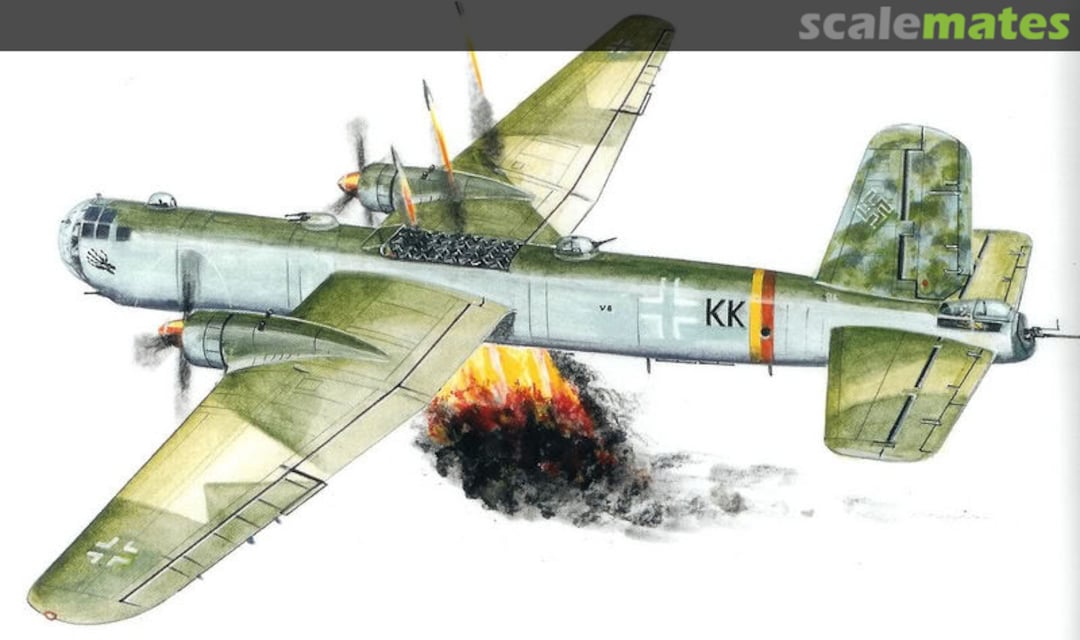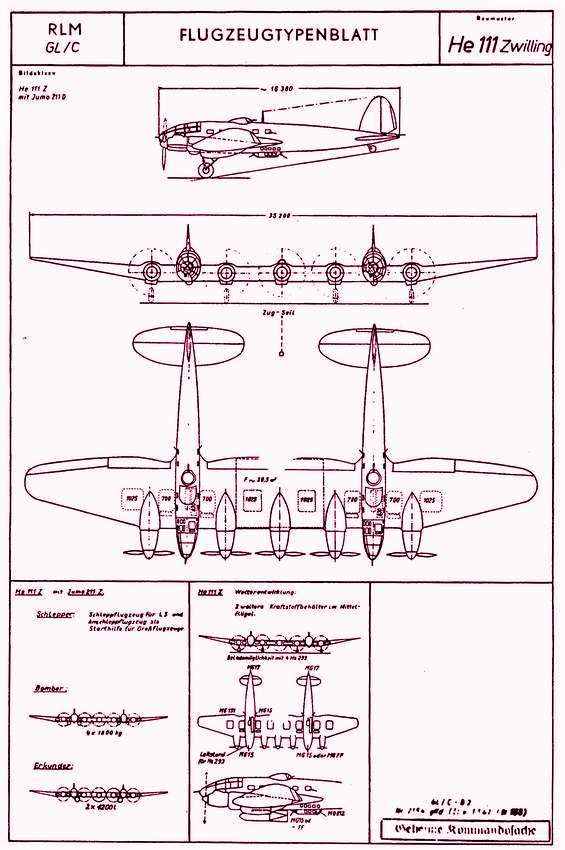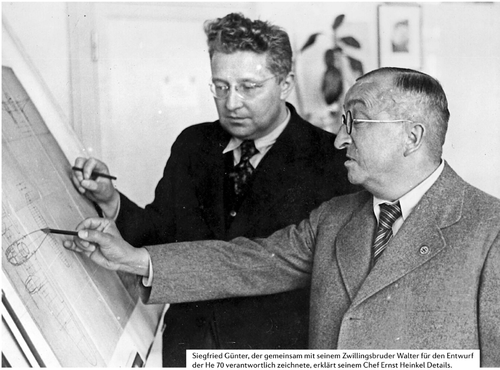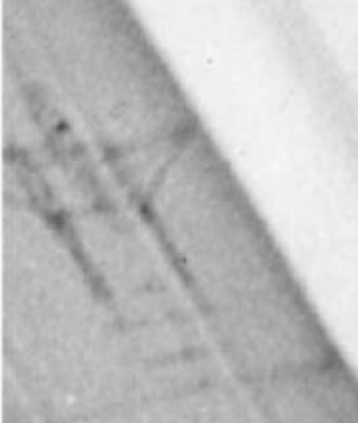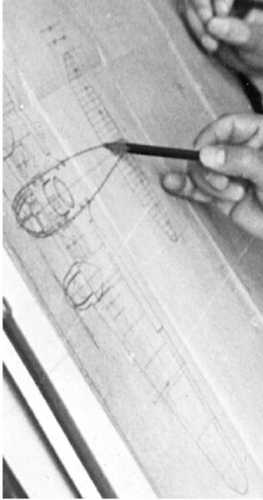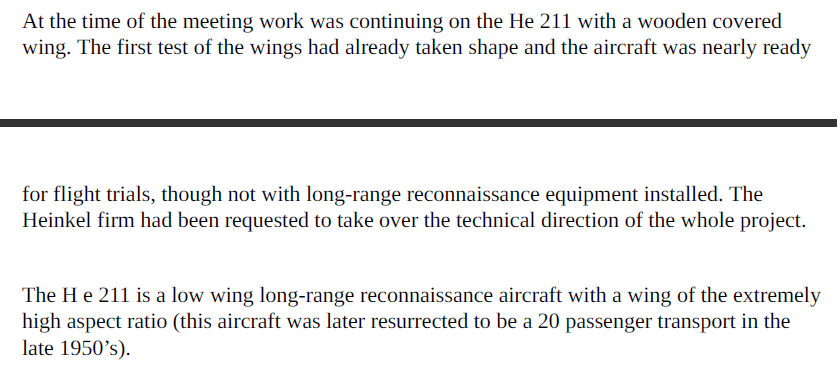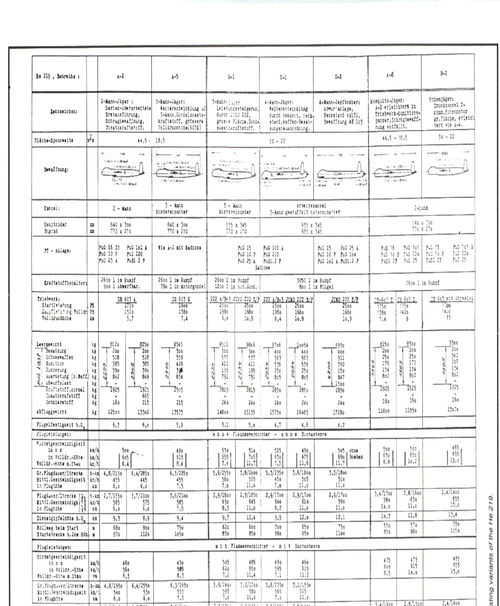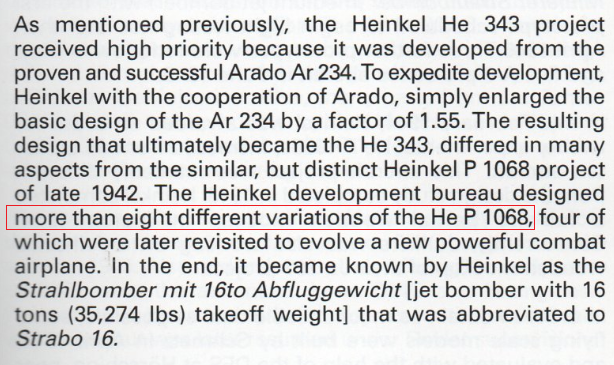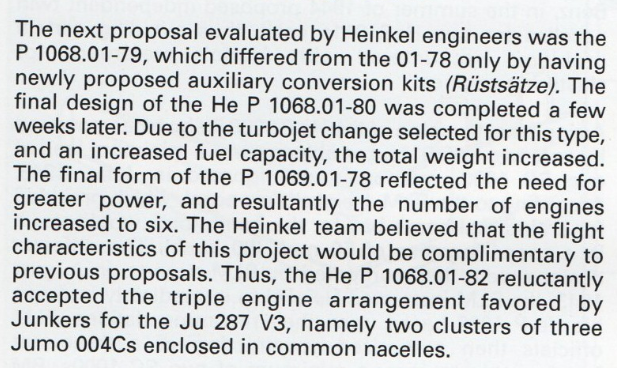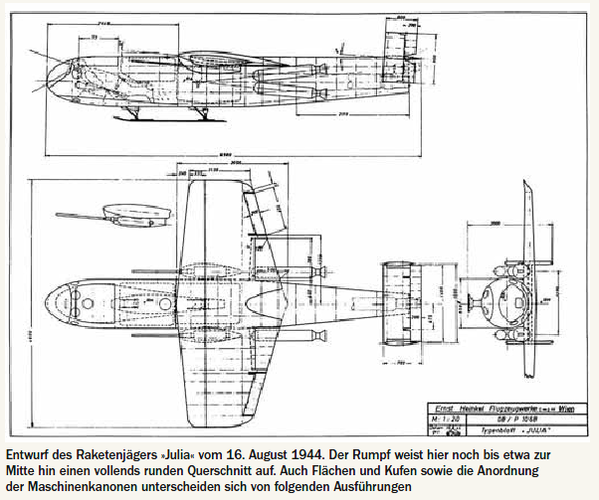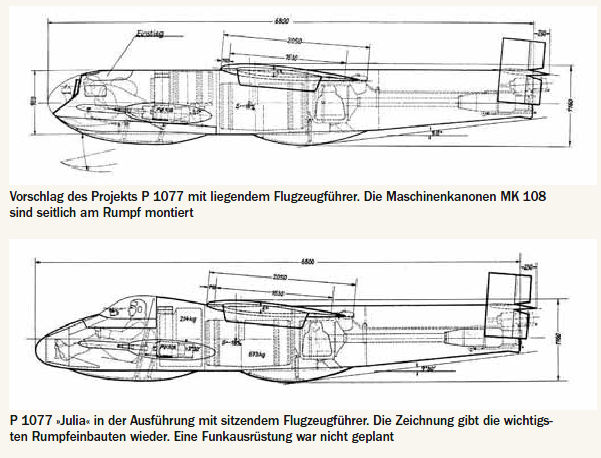You are using an out of date browser. It may not display this or other websites correctly.
You should upgrade or use an alternative browser.
You should upgrade or use an alternative browser.
Various Heinkel Projects and Prototypes
- Thread starter hesham
- Start date
- Joined
- 11 March 2006
- Messages
- 8,605
- Reaction score
- 3,038
A
Correction:
Allegedly, the He 278 was a a turboprop engine monoplane fighter project, but that is VERY doubtful and even the
Wikipedia article, which seems to be still yet the one and only source, is labelled as "Wikipedia:Articles for deletion/Heinkel He 278" !
https://en.wikipedia.org/wiki/Wikipedia%3AArticles_for_deletion%2FHeinkel_He_278
Once and for all : It's absolutely not recommended here, to draw a conclusion as "XXX was a project" on the
basis of such sparse, or better, not existing source ! :
Just googling for "He 278" already shows with the 7th hit, that quite probably there's something fishy with that
designation, so please, don't downgrade this forum to a collection of rumours, but do at least a bit of research !
hesham said:the Heinkel He.278 was a turboprop engine monoplane fighter Project.
https://pt.wikipedia.org/wiki/Heinkel_He_278
Correction:
Allegedly, the He 278 was a a turboprop engine monoplane fighter project, but that is VERY doubtful and even the
Wikipedia article, which seems to be still yet the one and only source, is labelled as "Wikipedia:Articles for deletion/Heinkel He 278" !
https://en.wikipedia.org/wiki/Wikipedia%3AArticles_for_deletion%2FHeinkel_He_278
Once and for all : It's absolutely not recommended here, to draw a conclusion as "XXX was a project" on the
basis of such sparse, or better, not existing source ! :
Just googling for "He 278" already shows with the 7th hit, that quite probably there's something fishy with that
designation, so please, don't downgrade this forum to a collection of rumours, but do at least a bit of research !
- Joined
- 26 May 2006
- Messages
- 32,627
- Reaction score
- 11,787
My dear Jemiba,
of course I agree with that,I want only to display a doubtful Info,but it comes from
a reliable site,so we want more of check,and they also put it in RLM list;
https://en.wikipedia.org/wiki/List_of_RLM_aircraft_designations
of course I agree with that,I want only to display a doubtful Info,but it comes from
a reliable site,so we want more of check,and they also put it in RLM list;
https://en.wikipedia.org/wiki/List_of_RLM_aircraft_designations
- Joined
- 26 May 2006
- Messages
- 32,627
- Reaction score
- 11,787
Some drawings to He.219;
Heinkel He 219 Uhu (Kagero Monographs No.41)
Heinkel He 219 Uhu (Kagero Monographs No.41)
Attachments
- Joined
- 13 August 2007
- Messages
- 7,118
- Reaction score
- 6,407
sgeorges4 said:is the heinkel 119 was assumed to have a military use?
No and Yes
Original the Heinkel 119 was "Projekt 1055" a high performance, experimental monoplane, privately funded by Ernst Heinkel in 1935.
Until the Reichsluftfahrtministerium (RLM) forbid further work on P. 1055 as not of military use.
1937 it was labeled as He 111U by Propaganda Ministerium during it's record braking flights
It got RLM number He 119 as unarmed reconnaissance bomber capable of out flight all enemy fighters due to its high performance.
non of He 119 ever used in combat and the 5 prototypes were later scrapped.
Henkel try to sell the P. 1055 as He 519 as armed reconnaissance bomber with high performance.
Biggest problem for program the He 119/519 needed two Daimler-Benz DB 601 A1 engine coupled together.
What make this aircraft extremely expensive to build compare to others airplanes in use by RLM
- Joined
- 11 March 2006
- Messages
- 8,605
- Reaction score
- 3,038
For the He 119 see https://www.secretprojects.co.uk/forum/index.php/topic,6350.0.html
Posts about this type please in that thread only .
Posts about this type please in that thread only .
- Joined
- 11 March 2012
- Messages
- 3,016
- Reaction score
- 2,680
——————————————————————————————-....... they don't show a real aircraft, not even a mock-up, but maybe a kind of decoy, or something like
that. ...)
Decoy?
Hah!
Hah!
Let’s apply Hanlon’s Razor to a decoy.
Hah!
Hah!
It is common practice to park derelict aircraft - in plain sight - to confuse enemy intelligence.
Let’s say (over-worked) ground crew are tasked to “stage” parts of dismantled, old airplanes on hard-standings. In their haste, they grab wings from airplane A, aft fuselage from airplane B, tail feathers from airplane C, forward fuselage from airplane D, etc. and stack them to vaguely resemble a parked airplane. A recce plane photographs this pile of junk. Next thing you know, enemy intelligence officers are warning pilots about this scary, new plane fielded by the first Air Force!
Hah!
Hah!
p.s. Hanlon’s Razor says: never blame cruelty when the same act can be blamed on stupidity!
Hah!
Hah!
Last edited:
Heinkel P.1074 Höhenjäger Article
High altitude fighter with DB603L.
Contra-rotating propellers in ring tail.
https://www.aviacionargentina.net/foros/forum/defensa-en-general/historia-de-la-aviaci%C3%A3%C2%B3n/707-proyectos-inconclusos-de-la-aeron%C3%A3%C2%A1utica-alemana-de-la-s-g-m/page28
High altitude fighter with DB603L.
Contra-rotating propellers in ring tail.
https://www.aviacionargentina.net/foros/forum/defensa-en-general/historia-de-la-aviaci%C3%A3%C2%B3n/707-proyectos-inconclusos-de-la-aeron%C3%A3%C2%A1utica-alemana-de-la-s-g-m/page28
sgeorges4
I really should change my personal text
- Joined
- 8 October 2017
- Messages
- 659
- Reaction score
- 316
what about the heinkel 111 Z?


2 prototypes where build and the RLM placed an order for 10 Z1( 3 based on reconstruct heinkel 111 H6,the other from H16) . Two other versions where considered,one bomber and for the reconnaissance.
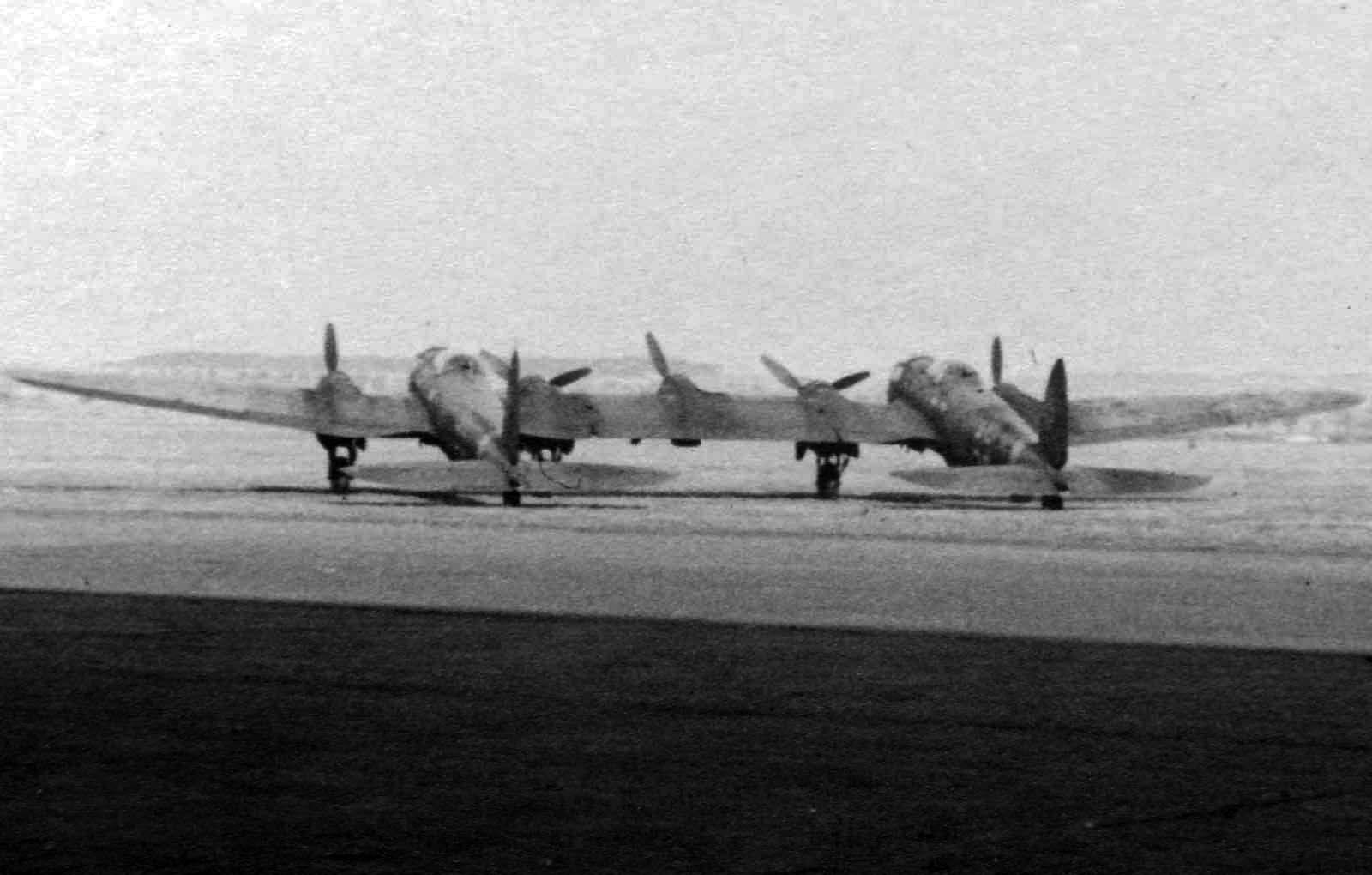
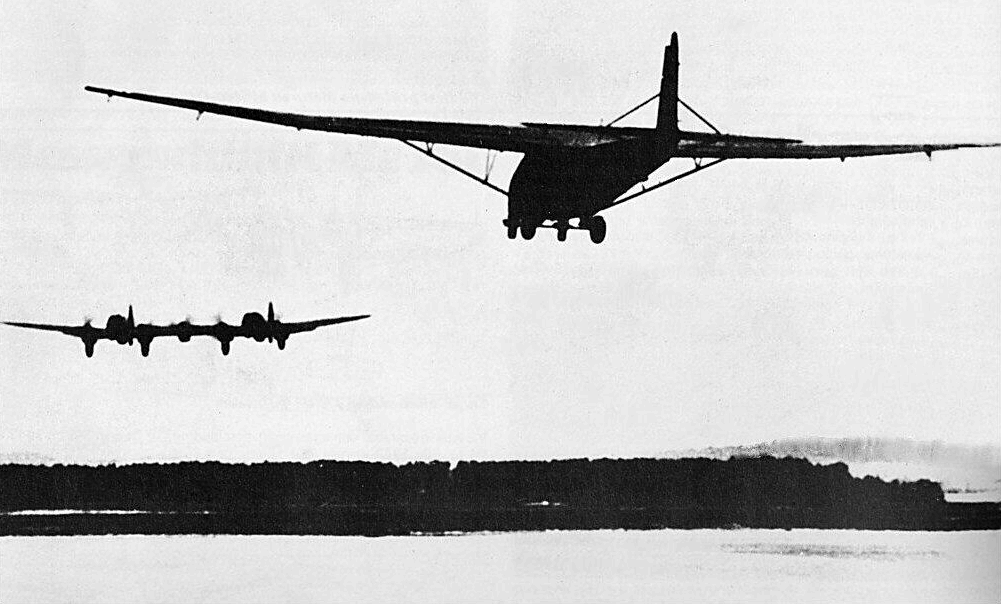
2 prototypes where build and the RLM placed an order for 10 Z1( 3 based on reconstruct heinkel 111 H6,the other from H16) . Two other versions where considered,one bomber and for the reconnaissance.
lucamax
ACCESS: Secret
Dear Friends,
I'm looking for information about the Heinkel P.1063 project: do you have some drawings about that aircraft?
I just know that the project was a 1942 fast bomber.
Thank you.
I'm looking for information about the Heinkel P.1063 project: do you have some drawings about that aircraft?
I just know that the project was a 1942 fast bomber.
Thank you.
- Joined
- 26 May 2006
- Messages
- 32,627
- Reaction score
- 11,787
From, Klassiker der Luftfahrt 2020-08,
so weird,the caption said it was a drawing to He.70,but it had twin engines ?! ;
Siegfried Günter, who worked with his twin brother Walter for the design who was responsible for the He 70 explains details to his boss Ernst Heinkel.
so weird,the caption said it was a drawing to He.70,but it had twin engines ?! ;
Siegfried Günter, who worked with his twin brother Walter for the design who was responsible for the He 70 explains details to his boss Ernst Heinkel.
Attachments
richard B
ACCESS: Secret
- Joined
- 17 August 2006
- Messages
- 330
- Reaction score
- 450
so weird,the caption said it was a drawing to He.70,but it had twin engines ?! ;
It'is a Heinkel 111 , not even an early one ...
richard B
ACCESS: Secret
- Joined
- 17 August 2006
- Messages
- 330
- Reaction score
- 450
I'm looking for information about the Heinkel P.1063 project
P-1063 : 1942 ; single seater bomber , mid-wing , 2 jets .
I don't know more ...
About the photo, the fuselage looks like the He 111, as stated by Richard, but the wings are exceedingly large, as well as the tailplane. Wing shape are different too. Also, what's that twin-boomer on the board's upper right?
Let me stepback on the drawing since, in perspective, it fits rightly the Heinkel 111, both in wings and tailplane. Richard was right all the time. That said, the right corner drawing (twin boom aircraft) is really puzzling.
- Joined
- 11 March 2006
- Messages
- 8,605
- Reaction score
- 3,038
It's on the same sheet, as the top view of the He 111, and though my attempt to dewarp it, is
hardly satisfactory, I don't see something much too different, than to be expected from the
front view of a twin engined aircraft, with it's landing gear lowered ... like a He 111 ?
hardly satisfactory, I don't see something much too different, than to be expected from the
front view of a twin engined aircraft, with it's landing gear lowered ... like a He 111 ?
Attachments
I guess you're right, Jens. Absolutely not my day!It's on the same sheet, as the top view of the He 111, and though my attempt to dewarp it, is
hardly satisfactory, I don't see something much too different, than to be expected from the
front view of a twin engined aircraft, with it's landing gear lowered ... like a He 111 ?
- Joined
- 11 March 2006
- Messages
- 8,605
- Reaction score
- 3,038
I think, the Hütter Hü 211 is meant, not a "He 211". With regards to precision of notations of designations,
it's not the best source either ("F.W.190", "Ba 349 “Natter Viper” and so on).
Especially the mention of "... his aircraft was later resurrected to be a 20 passenger transport in the
late 1950’s)" is doubtful, because there actually was a project for such an aircraft, but it had nothing
to do with a wing with a high aspect ratio, as you can find here in your post:
https://www.secretprojects.co.uk/threads/heinkel-he-211-jet-transport-aircraft.3498/
it's not the best source either ("F.W.190", "Ba 349 “Natter Viper” and so on).
Especially the mention of "... his aircraft was later resurrected to be a 20 passenger transport in the
late 1950’s)" is doubtful, because there actually was a project for such an aircraft, but it had nothing
to do with a wing with a high aspect ratio, as you can find here in your post:
https://www.secretprojects.co.uk/threads/heinkel-he-211-jet-transport-aircraft.3498/
- Joined
- 26 May 2006
- Messages
- 32,627
- Reaction score
- 11,787
My dear Jemiba,
I agree with you and maybe he meant Hu.211,but if we think there was
a possibility that was he meant,just one per cent,I could be wrong;
I know we discussed it million times,but the new thing,that an expert from my
country,I displayed its pictures to him,and emphasis that was not fake and he
sure about 90 %,and we know there is many secrets in German WWII's aircraft
still obscured,but temporarily it was a mistake from the author of the book.
I agree with you and maybe he meant Hu.211,but if we think there was
a possibility that was he meant,just one per cent,I could be wrong;
I know we discussed it million times,but the new thing,that an expert from my
country,I displayed its pictures to him,and emphasis that was not fake and he
sure about 90 %,and we know there is many secrets in German WWII's aircraft
still obscured,but temporarily it was a mistake from the author of the book.
Vahe Demirjian
I really should change my personal text
- Joined
- 28 February 2013
- Messages
- 816
- Reaction score
- 539
According to page 279 of the book from which you get this info, the first three preliminary P.1068 designs had straight wings and either four or six HeS 011s but had a backswept horizontal stabilizer, and a fourth proposal was similar but with backswept wings. It is also mentioned that Heinkel put forward a P.1068 variant to carry only one crewmember and utilize two HeS 011s On page 279, the P.1068.01-79 variant with auxiliary conversion kits is mentioned, as is the P.1068.01-82 design with two underwing pods of two Junkers Jumo 004Cs (similar to the underwing triple engine pod seen in the third, fourth, fifth, and sixth Ju 287 prototypes and the production Ju 287).From, Jet Planes of the Third Reich - The Secret Projects-volume two,
a strange Info about more than right different variants to P.1068 ?.
- Joined
- 11 June 2014
- Messages
- 1,328
- Reaction score
- 1,749
According to page 279 of the book from which you get this info, the first three preliminary P.1068 designs had straight wings and either four or six HeS 011s but had a backswept horizontal stabilizer, and a fourth proposal was similar but with backswept wings. It is also mentioned that Heinkel put forward a P.1068 variant to carry only one crewmember and utilize two HeS 011s On page 279, the P.1068.01-79 variant with auxiliary conversion kits is mentioned, as is the P.1068.01-82 design with two underwing pods of two Junkers Jumo 004Cs (similar to the underwing triple engine pod seen in the third, fourth, fifth, and sixth Ju 287 prototypes and the production Ju 287).From, Jet Planes of the Third Reich - The Secret Projects-volume two,
a strange Info about more than right different variants to P.1068 ?.
Judging by the numbering of the P 1073 series, perhaps the best documented design process ever conducted by Heinkel, I would suggest that there were considerably more than eight versions of the P 1068. We only know of four designs - P 1068.01-78, P 1068.01-80, P 1068.01-83 and P 1068.01-84. It stands to reason that there would have been a P 1068.01-01, -02, -03 etc. This was certainly how P 1073 worked. I see no reason why there couldn't have been 84 different P 1068 designs.
Heinkel had worked on jet bomber designs for much of 1942 (presumably the twin-jet P 1063, about which practically nothing is known) and alongside Junkers was commissioned to work on a jet bomber design at the end of the meeting on January 19, 1943, at which the Dornier P 231 was chosen to become the Luftwaffe's new fast bomber (receiving the designation Do 335 a short while later).
The earliest known mention of the P 1068 is in a report of a meeting on June 8, 1943. Heinkel then received (alongside Junkers and Blohm & Voss) an RLM specification for a four-jet bomber on July 30, 1943.
The four known designs (P 1068.01-78, -80, -83 and -84) come from a report dated January 14, 1944. So would Heinkel have had sufficient time between January 19, 1943, and January 14, 1944, to come up with 84 different designs as part of P 1068? I think they would. Just because those drawings do not appear to have survived, doesn't mean they never existed! I would say that we currently know about less than 1% of all project designs completed by Heinkel during the war. The vast majority appear to have been lost or destroyed.
As a footnote, although the He 343 was nominally based on the P 1068 series, in reality it does seem to have been based on a scaled up version of the Ar 234. And P 1068 didn't end with the He 343 - a series of 1:2 scale aircraft 'models' designated DFS P 1068 were worked on by the DFS to investigate different wing sweepback conditions.
The full (or at least as full as I could make it, based on the surviving documents) story is in my Luftwaffe: Secret Projects of the Third Reich bookazine.
- Joined
- 11 June 2014
- Messages
- 1,328
- Reaction score
- 1,749
Thank you my dear Dan,
but the logical sequence must had been those numbers -79,-81 & -82,and
from the same source ?.
The only known report is the one I mentioned. This text strikes me as inaccurate. For a start, the P 1068.01-78 had only four engines, not six. There was no 'final form', unless the author means the P 1068.01-80, which was essentially a -78 with six engines rather than four. The idea of conceptual ideas such as these having conversion kits designed for them also seems unlikely to me. Companies designed conversion kits after a design had been chosen for production - doing so before that had happened would have been a waste of time.
I couldn't rule these assertions out definitively though and if someone has any primary source evidence to back them up I would love to see it.
Airborne2001
ACCESS: Confidential
- Joined
- 19 June 2020
- Messages
- 135
- Reaction score
- 125
Does anyone here know why the He P.1078 (presumably all derivatives included) got cancelled? The only place I could see for sure was unfortunately Wikipedia, which states that "severe criticism" caused the design(s) to be cancelled.
- Joined
- 11 June 2014
- Messages
- 1,328
- Reaction score
- 1,749
Does anyone here know why the He P.1078 (presumably all derivatives included) got cancelled? The only place I could see for sure was unfortunately Wikipedia, which states that "severe criticism" caused the design(s) to be cancelled.
The whole story of the Heinkel P 1078, based entirely on primary source documents, is in my book Secret Projects of the Luftwaffe Volume 1: Jet Fighters 1939-1945.
Here's a potted version...
To say that it was 'cancelled' isn't really correct; it would be more accurate to say that Heinkel's tender for the Chef-TLR's advanced single jet fighter specification was declined.
The process of providing a new aircraft for the Luftwaffe in Nazi Germany usually went as follows:
1 Requirement from the Luftwaffe. The Luftwaffe, usually through the OKL (Luftwaffe high command), would tell the RLM (German air ministry - latterly, for our purposes, referred to as the Chef-TLR) that a new aircraft was needed to fill a particular role and indicate what its desired performance ought to be.
2. The RLM would draft a specification based on this requirement then issue that specification to certain aircraft manufacturing companies, inviting them to submit designs intended to meet the specification.
3. The aircraft companies would go away and work on their tenders. This is the point at which the 'projects' were usually started. Sometimes the specification was very, well, specific and the projects from different companies turned out looking rather similar. Other times the specification was extremely vague, resulting in widely differing designs.
4. A comparison meeting would be held where representatives of each tendering company would be brought together with RLM engineers and other specialists to compare the designs against each other. If the designs were similar, the comparison was relatively straightforward. If not, it could be very difficult to establish a good basis for comparison. At this stage one or more tenders could be rejected, with the most promising designs moving forward to the next comparison meeting.
5. Eventually one or more designs would be chosen for development and the successful company would be issued with a development contract. This was usually for a short run of prototypes on the basis that should these prove acceptable a full initial series of production aircraft would follow.
The advanced single-jet fighter competition (which would eventually include the P 1078) was run in parallel to the basic/economy/emergency Volksjaeger single-jet fighter competition. Heinkel had already won the latter with a downgraded version of its P 1073 design (originally submitted for the advanced fighter contest) and was specifically told that the original advanced version of this design would no longer be accepted for the advanced competition.
So Heinkel had to literally go back to the drawing board. Based on its experience with the He 162 (being aware of how tenuous the situation had become with regard to manufacturing and raw materials) and having seen what other companies were offering for the advanced competition, Heinkel created the extremely compact but aerodynamically advanced P 1078. But the other companies all now had a decent head start in terms of paperwork and Heinkel was unable to supply the mathematical calculations necessary to support the P 1078's aerodynamic design. It simply didn't have time to work through the maths, whereas the other companies could at least supply some data in support of their tenders.
As a result of this, the P 1078 drew criticism and was not among the designs that the adjudicators felt were most likely to succeed. As of the end of February 1945, the P 1078 is no longer mentioned in what documents concerning the competition survive. It would appear that the P 1078 was declined at this point because the leading designs (such as Focke-Wulf's 'Huckebein', Messerschmitt's P 1111 and Junkers' EF 128) were simply better worked through and were therefore more likely to succeed.
You mention derivatives - there were no derivatives. Only one P 1078 design was tendered for the competition. For more clarity on this point, read the book.
Last edited:
Airborne2001
ACCESS: Confidential
- Joined
- 19 June 2020
- Messages
- 135
- Reaction score
- 125
Thank you very much for the information! Alas, it appears the plane was a victim of the circumstances. On the bright side for Heinkel, at least it did get out its He-162.Does anyone here know why the He P.1078 (presumably all derivatives included) got cancelled? The only place I could see for sure was unfortunately Wikipedia, which states that "severe criticism" caused the design(s) to be cancelled.
The whole story of the Heinkel P 1078, based entirely on primary source documents, is in my book Secret Projects of the Luftwaffe Volume 1: Jet Fighters 1939-1945.
Here's a potted version...
To say that it was 'cancelled' isn't really correct; it would be more accurate to say that Heinkel's tender for the Chef-TLR's advanced single jet fighter specification was declined.
The process of providing a new aircraft for the Luftwaffe in Nazi Germany usually went as follows:
1 Requirement from the Luftwaffe. The Luftwaffe, usually through the OKL (Luftwaffe high command), would tell the RLM (German air ministry - latterly, for our purposes, referred to as the Chef-TLR) that a new aircraft was needed to fill a particular role and indicate what its desired performance ought to be.
2. The RLM would draft a specification based on this requirement then issue that specification to certain aircraft manufacturing companies, inviting them to submit designs intended to meet the specification.
3. The aircraft companies would go away and work on their tenders. This is the point at which the 'projects' were usually started. Sometimes the specification was very, well, specific and the project from different companies turned out looking rather similar. Other times the specification was extremely vague, resulting in widely differing designs.
4. A comparison meeting would be held where representatives of each tendering company would be brought together with RLM engineers and other specialists to compare the designs against each other. If the designs were similar, the comparison was relatively straightforward. If not, it could be very difficult to establish a good basis for comparison. At this stage one or more tenders could be rejected, with the most promising designs moving forward to the next comparison meeting.
5. Eventually one or more designs would be chosen for development and the successful company would be issued with a development contract. This was usually for a short run of prototypes on the basis that should these prove acceptable a full initial series of production aircraft would follow.
The advanced single-jet fighter competition (which would eventually include the P 1078) was run in parallel to the basic/economy/emergency Volksjaeger single-jet fighter competition. Heinkel had already won the latter with a downgraded version of its P 1073 design (originally submitted for the advanced fighter contest) and was specifically told that the original advanced version of this design would no longer be accepted for the advanced competition.
So Heinkel had to literally go back to the drawing board. Based on its experience with the He 162 (being aware of how tenuous the situation had become with regard to manufacturing and raw materials) and having seen what other companies were offering for the advanced competition, Heinkel created the extremely compact but aerodynamically advanced P 1078. But the other companies all now had a decent head start in terms of paperwork and Heinkel was unable to supply the mathematical calculations necessary to support the P 1078's aerodynamic design. It simply didn't have time to work through the maths, whereas the other companies could at least supply some data in support of their tenders.
As a result of this, the P 1078 drew criticism and was not among the designs that the adjudicators felt were most likely to succeed. As of the end of February 1945, the P 1078 is no longer mentioned in what documents concerning the competition survive. It would appear that the P 1078 was declined at this point because the leading designs (such as Focke-Wulf's 'Huckebein', Messerschmitt's P 1111 and Junkers' EF 128) were simply better worked through and were therefore more likely to succeed.
You mention derivatives - there were no derivatives. Only one P 1078 design was tendered for the competition. For more clarity on this point, read the book.
Similar threads
-
Civilian Heinkel Projetcs and Prototypes
- Started by hesham
- Replies: 7
-
-
-
Multi-seat fighters: "cruiser fighters" and "battleplanes"
- Started by Avimimus
- Replies: 103
-
Forthcoming:Osprey X Planes No.11 : Jet Prototypes of World War II
- Started by ov-101
- Replies: 1

